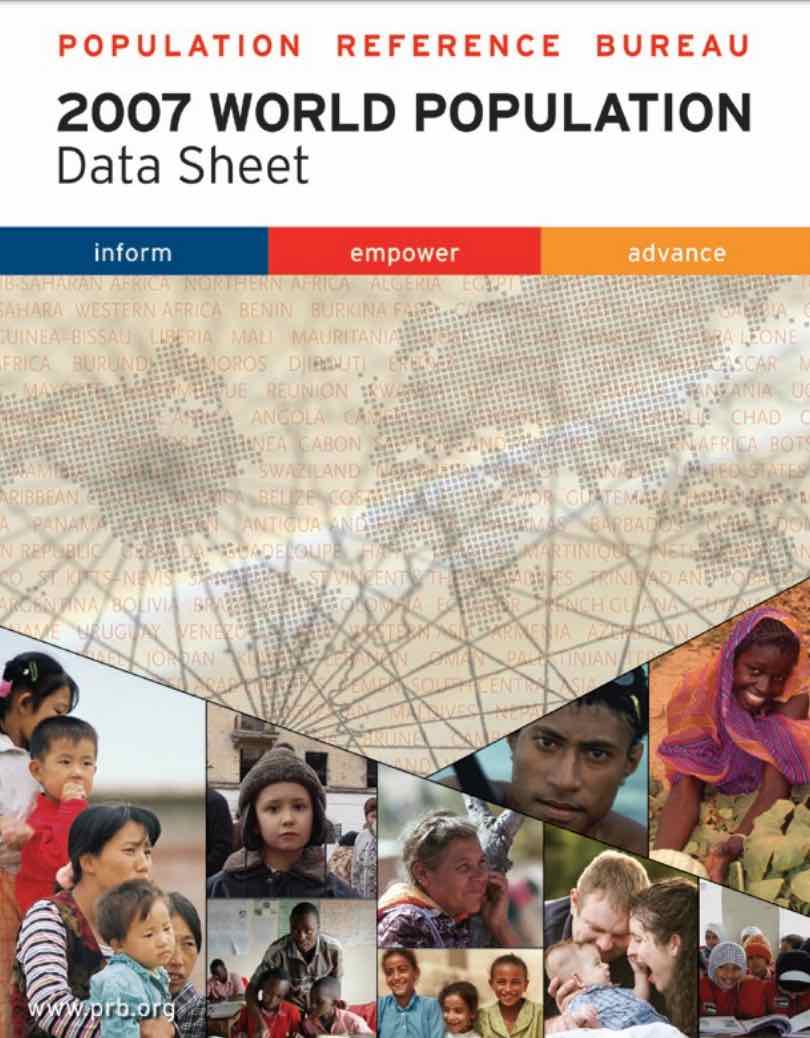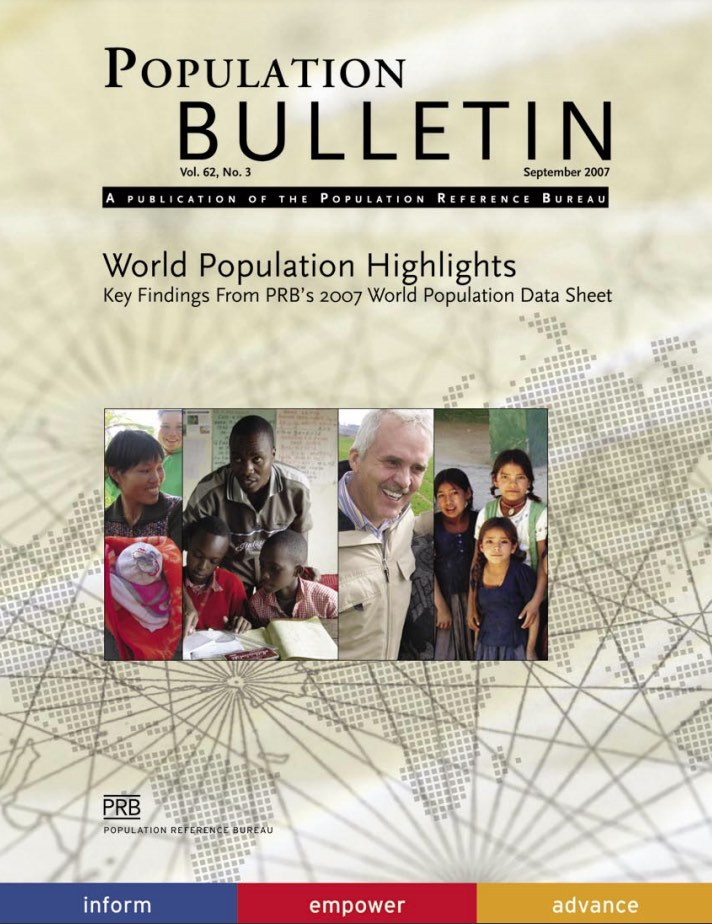
2007 World Population Data Sheet
Product: World Population Data Sheet
Author: PRB
Date: August 16, 2007
Malnutrition Is a Major Contributor to Child Deaths
(Washington, DC) Malnutrition plays a role in the deaths of about 16,000 young children every day, virtually all of them in the developing world. That is a yearly toll of almost 6 million, about the same as the population of Denmark, Jordan, or Laos. By weakening resistance to infection and disease, malnutrition contributes to more than half the deaths of children under 5 worldwide.
The Population Reference Bureau’s 2007 World Population Data Sheet and two companion reports released today offer detailed information about the prevalence of malnutrition worldwide, and its causes and consequences. These reports also highlight information about cost-effective solutions that could improve global nutrition.
“Malnutrition is the underlying cause of millions of deaths, but lacks public recognition because it does not kill young children directly, as does pneumonia or diarrhea,” said Bill Butz, PRB’s president. “Many of these deaths could be averted through nutrition measures that are known to be effective, often at low cost.”
- Despite some important progress, about 30% of young children in low- and middle-income countries are underweight. The largest problems are in South Asia and sub-Saharan Africa. There are states in India, for example, in which almost half of all young children are underweight.
- Nearly 50% of all young children in the developing world do not receive enough iron in their diets, endangering their mental and physical development.
- At the same time, obesity is an intensifying problem in the United States and other industrialized nations—37% of U.S. men and 42% of U.S. women are obese. But levels also are rising in some developing nations: 21% of women are obese in Morocco, as are 34% of women in Mexico.
The 2007 World Population Data Sheet provides up-to-date demographic, health, and environment data for all the countries and major regions of the world. It points up vivid contrasts between developed and developing countries, as illustrated by the table below with data from the United States, Germany, and Ethiopia.
“The world’s rich and poor nations face very different population challenges,” said Carl Haub, PRB senior demographer and author of the 2007 World Population Data Sheet. “Nations such as Germany and the United States have large elderly populations to care for, while poorer nations such as Ethiopia need to harness the potential economic energy of a youthful population.”
| United States | Germany | Ethiopia | |
|---|---|---|---|
| Population mid-2007 | 302.2 million | 82.3 million | 77.1 million |
| Population 2025 (projected) | 349.4 million | 79.6 million | 108.7 million |
| Lifetime births per woman | 2.1 | 1.3 | 5.4 |
| Percent of population below age 15 | 20% | 14% | 43% |
| Percent of population ages 65+ | 12% | 19% | 3% |
| Life expectancy at birth | 78 years | 79 years | 49 years |
| Infant deaths per 1,000 births | 6.5 | 3.8 | 77 |
| Percent of adults with HIV/AIDS (2005) | 0.6% | 0.1% | 1.4% |
| Percent of children under 5 underweight | 1% | — | 35% |
Other highlights from the 2007 World Population Data Sheet include:
World population growth will continue. World population is 6.6 billion in 2007, up from 6.1 billion in 2000. It is projected to rise to 9.3 billion by 2050, with nearly all of that increase in developing countries. By 2008, half of all people will live in urban areas.
Fertility rates may be rising again in some European countries. After years of low but stable rates, the number of children women are having is increasing in Italy, Spain, and Sweden, among others.
Fertility rates are holding steady at high levels in some developing nations after years of decline. In Afghanistan, the rate is nearly seven children per woman; in Nigeria, it is nearly six.
HIV prevalence is likely lower than earlier estimates, but still a crisis. New results from national health surveys indicate that HIV prevalence is likely lower than earlier estimates (because of more nationally representative samples), especially in such countries as India and Kenya. The numbers remain high, however, and more than 4 million people were newly infected in 2006.
The international refugee population increased during 2006. The number of refugees rose from 8.7 million to 9.9 million during 2006. This was due in large part to the displacement of Iraqis to other countries, particularly to Syria and Jordan.

 ">
">
 ">
">